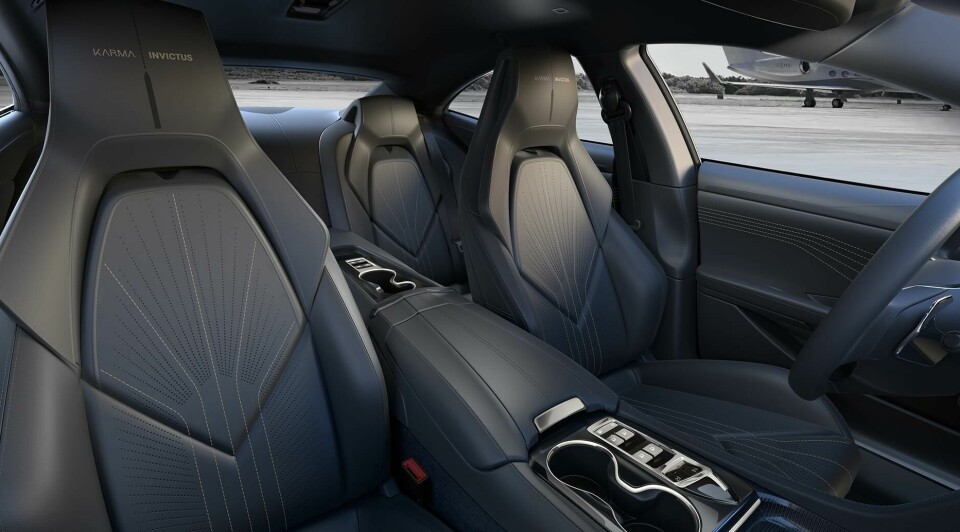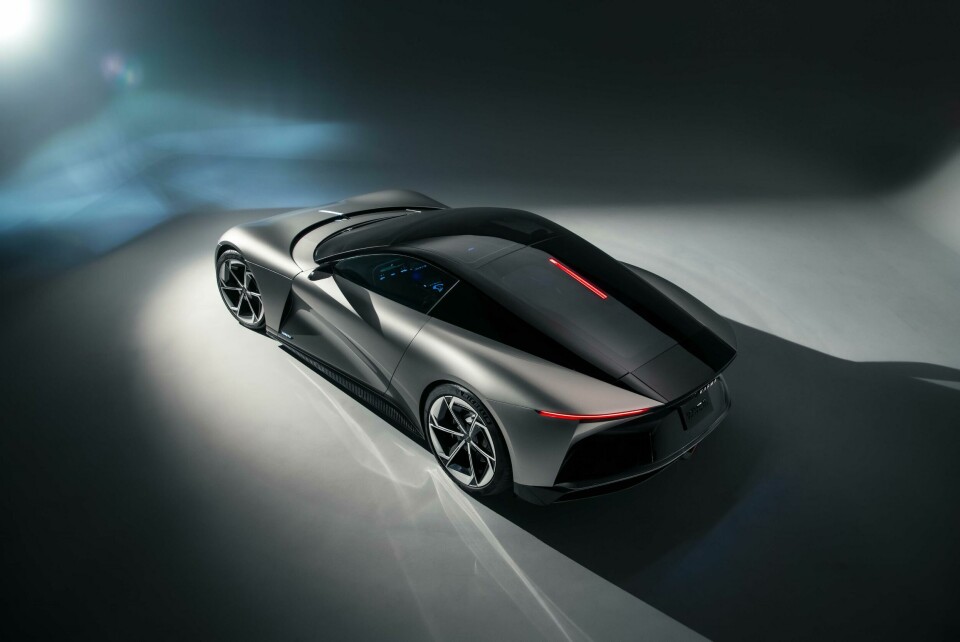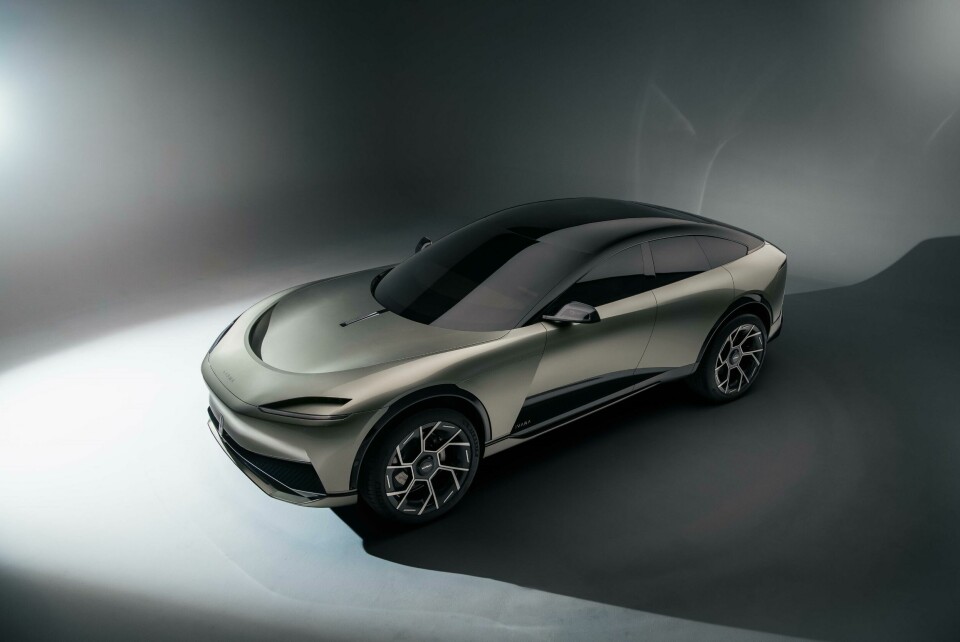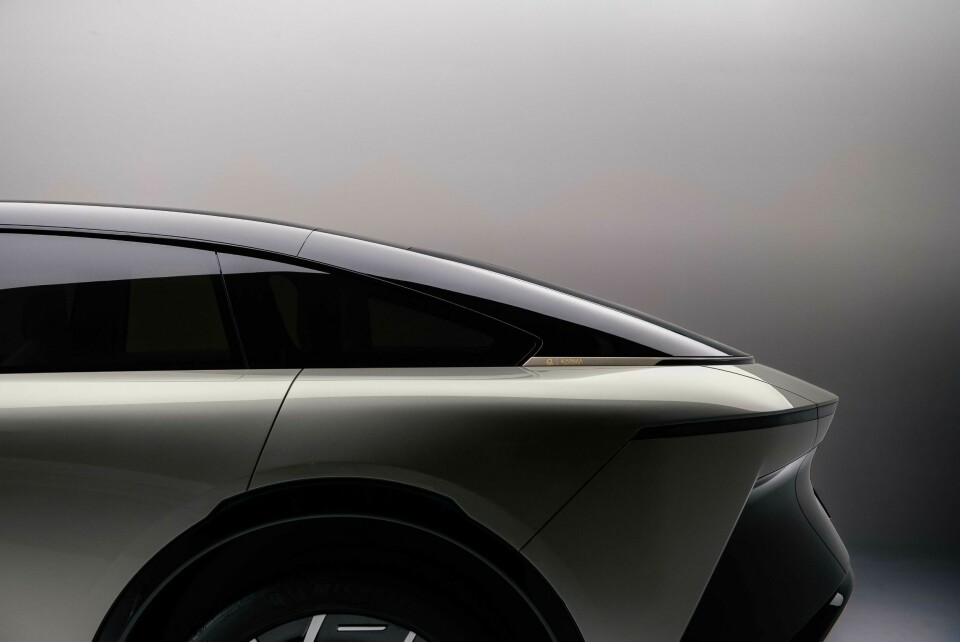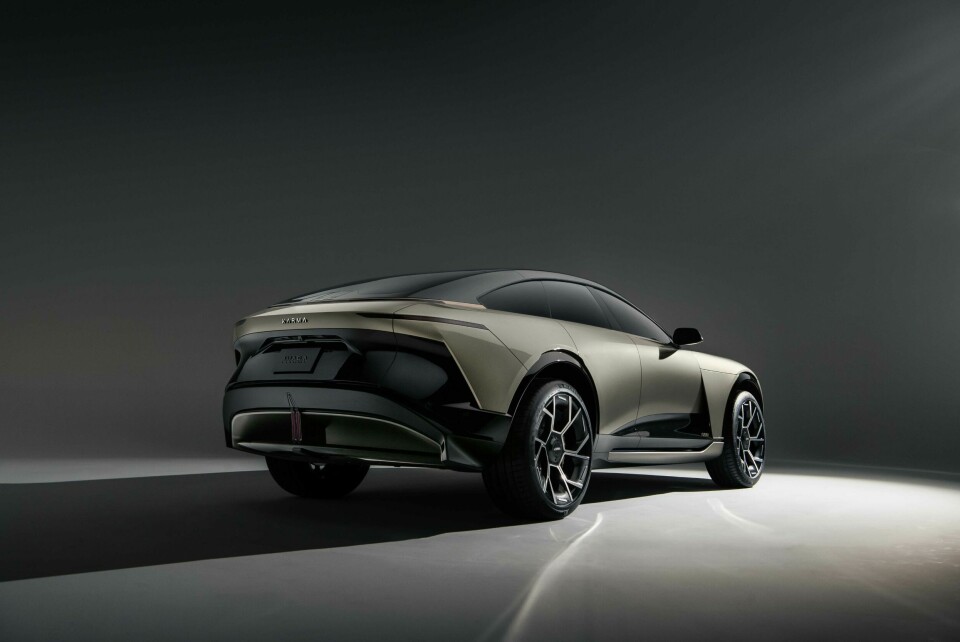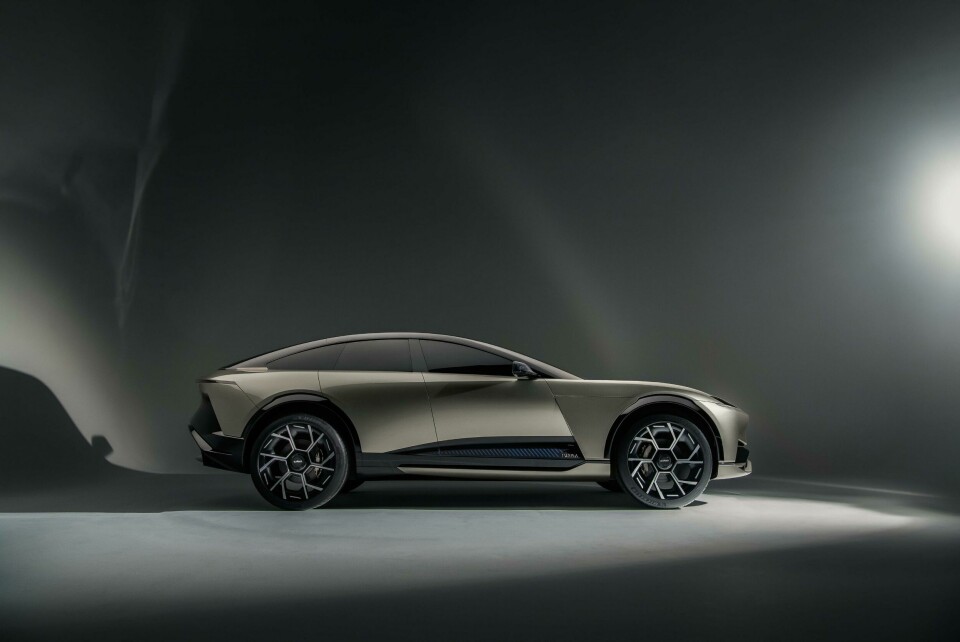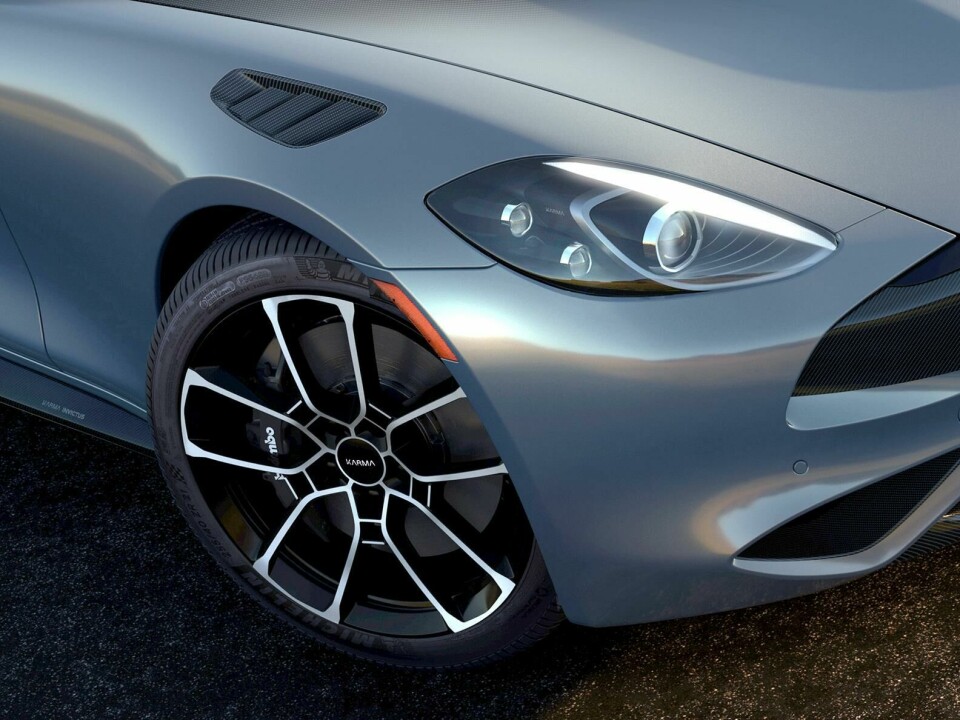
Karma design bosses reveal the ‘ultimate’ edition of the Revero
Michelle Christensen and Nicholas David share the design story behind the brand’s latest ultra luxury performance coupe
Karma has today revealed the Invictus, a performance-first super coupe that may well be the final iteration of the Revero. Shown on the manicured lawns of the Las Vegas Concours, it carries the same distinctive Karma silhouette and design cues but brings added capability and some subtle details inspired by American Art Deco icons.
In this wide-ranging interview, VP of design Michelle Christensen and senior design director Nicholas David discuss not only the latest addition to the portfolio but also trends around luxury, the pendulum of screen sizes and bringing mainstream OEM processes to new brands.
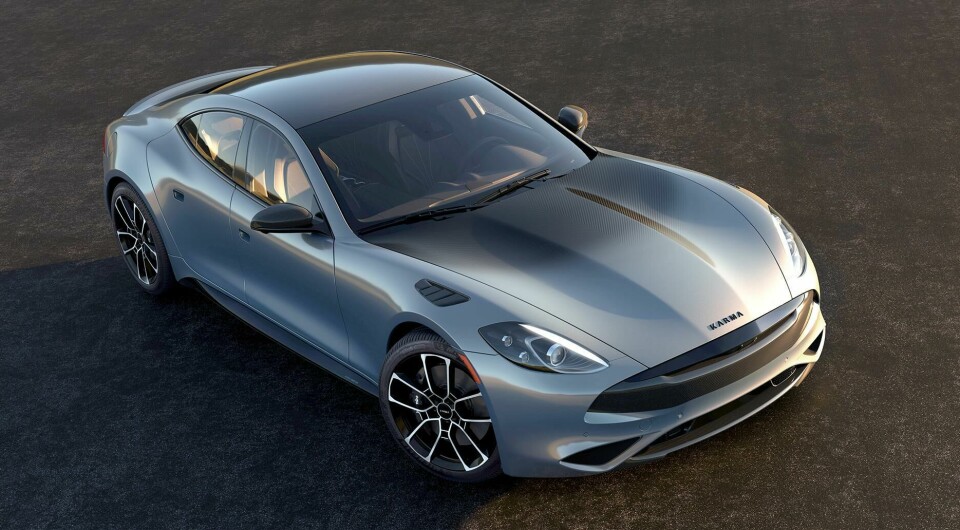
Car Design News: You were in Vegas this time last year. What made you choose the Concours again for this launch?
Michelle Christensen: I think we were the first company to reveal a vehicle here, and with the aim to push the brand way more upscale to ultra luxury Vegas is an awesome setting for that. You’ve got all the ballers, the high rollers, and the Vegas Concours is just really cool. If you were to compare it to Monterey, it’s a bit more approachable and has a different vibe. It’s a great setting for our brand and we want to continue revealing vehicles here.
Nicholas David: When we did it in Vegas last year, it was about a week before the Formula 1, so there was already this kind of automotive vibe in the city with all the press and people in town. The setting is really impressive andd you’re next to some very high end brands.
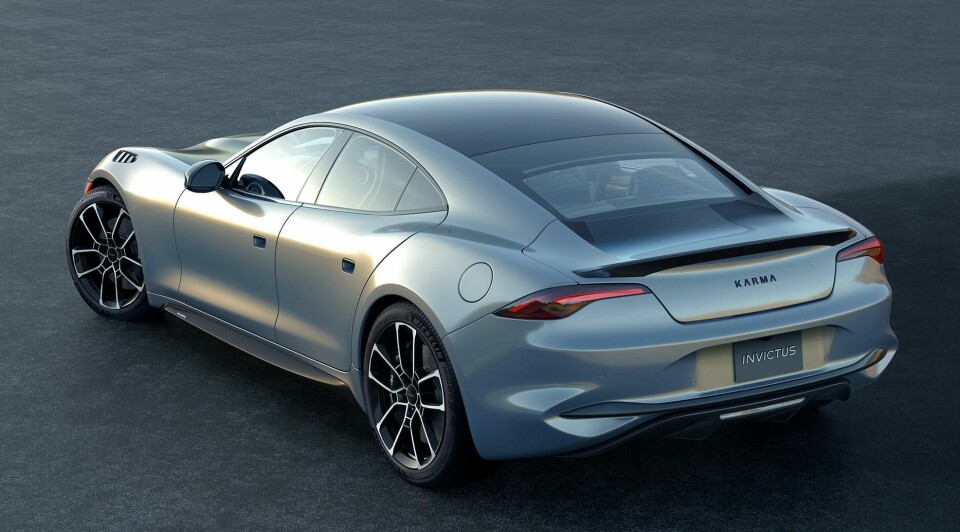
CDN: You were rubbing shoulders with Rolls Royce and Automobili Pininfarina among others, last year. Is that who you consider your competition?
MC: Yeah, I think so. The portfolio we’re planning has a nice wide range but we are definitely aiming for ultra luxury. We’re really upscaling the brand and I think that’s where this whole reveal of Invictus comes in: it showcases our ability to customise and personalise. With our facility in California and our low volumes, we can reach a similar kind of level to some of these competitive brands.
CDN: The Invictus is a performance-focussed variant of the Revero. How do you blend that with your aspirations for ultra luxury – do the two mindsets not clash a little?
ND: We always try to find that balance. Where do you push the sportiness enough where it maintains the luxury in it? With the Invictus, there’s some really nice upgrades with the wheels and tires and then the 0-60 performance that comes with that. We’ve focused on that visceral reaction while you’re driving, while maintaining the luxury elements around you inside the car.
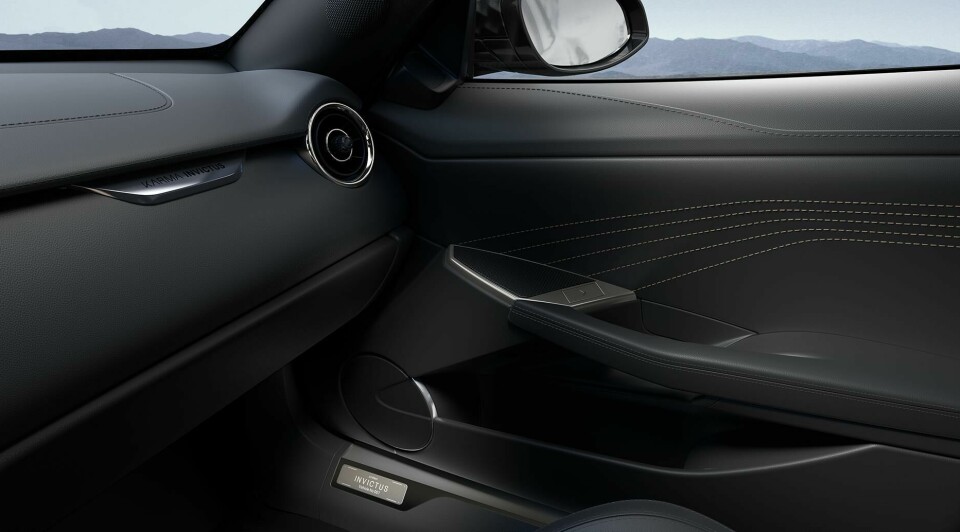
MC: I think the exclusivity of the car is important as well. It’s a very limited edition run of 30 vehicles that will have this Invictus treatment. It’s very much a celebration of the Revero, the ultimate expression of that model. There is a sophisticated paint job and all these beautiful little details that make it different, too. With each vehicle we have in our portfolio there’ll be like a barometer of leaning one way or the other, and the Invictus strikes a nice balance.
Everything is distilled down to its purest, most beautiful form
CDN: You have mentioned the push into “ultra luxury.” What does that look like, exactly?
ND: Something Michelle and I have been working hard on is defining our version of ultra luxury. For some brands, it is about chrome or certain garnishments. You’ll notice that our cars are very simple, and our ultra luxury is more about the moving panels and the hidden features like the nod to pop up headlamps, hidden wipers and rear spoilers. It’s been challenging to define our version of ultra luxury, but I think we’ve done a pretty good job so far.
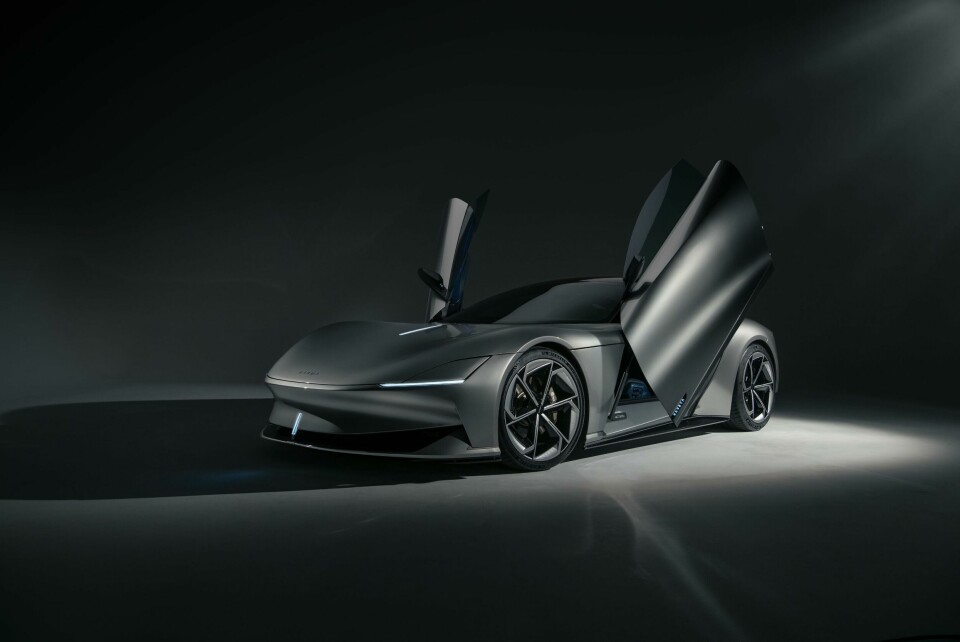
MC: We have a really unique white space as a brand. When you think of ultra luxury you think of British vehicles, Italian, German to some extent. A lot of those brands carry a lot of tradition, but we have this unique niche in that there’s no American brands associated with ultra luxury, in our opinion.
A lot of our inspiration comes from space exploration, too, and this idea of timeless futurism, which we really embodied in the Kaveya earlier. For us, everything is distilled down to its purest, most beautiful form and function. But it comes alive when you need it and kind of surprises you as you interact with it.
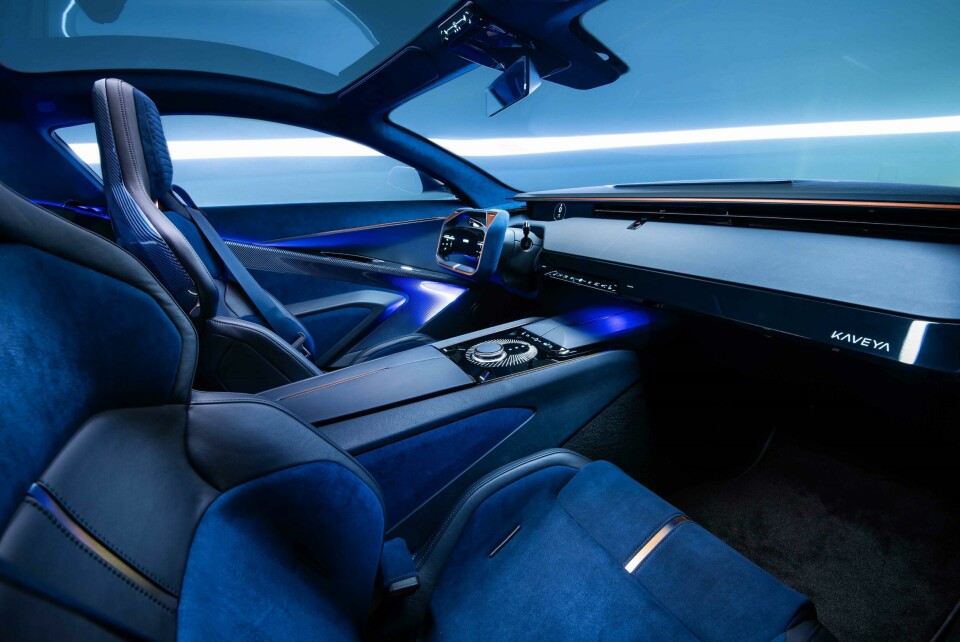
CDN: Luxury is often quite maximalist, but you’re saying Karma is more about paring things back?
MC: Exactly. It’s about a reduction. A reduction of screens and decoration, and using ultra-high end materials and technology to allow the vehicle to perform when you need it.
ND: We actually benchmarked other vehicles in this space and kept seeing all these large touch screens, which bring a lot of blue light in the car. With some brands, you turn the car on at the night and it almost looks like…
CDN: …the Vegas strip.
ND: Yes, exactly. But it turns out that a problem actually created a very nice solution for us. With the amount of volume we’re doing, it doesn’t make sense to acquire massive screens and amortise them across hundreds of thousands of vehicles. But because of that, we worked out a way of hiding the screen until you need it, so our reductionist approach actually separates us from the rest and brings a different kind of theatre.
CDN: From a CMF perspective, the seats (shown above) are embossed with the exterior pattern of the Chrysler Building. Why did you go with that? There’s no shortage of Art Deco in California…
MC: One of the foundations of our brand is this idea of American ingenuity, and we have this internal concept called Technological Sublime which relates to all these megastructures and beautiful buildings that complement the landscape. We draw inspiration from all over the US, and although we’re definitely a Californian brand, one of our designers was really inspired by the Chrysler Building. There are other details that draw on Art Deco, especially in some of the HMI and the stitching.
ND: There are little nods to Art Deco around the exterior as well, such as the split five-spoke wheel, which comes to a subtle peak on the side of the rim as a nod to some of those architectural elements.

CDN: You’ve worked on some performance vehicles before, Michelle, including the second-generation NSX. Do you find yourself looking back to projects like these for inspiration?
MC: I think you always will, naturally. I think what I take is more of the process and certain things that worked, certain things that didn’t work. As you go through your career and work on more vehicles, you start to get this shorthand with things. And that’s why I love working with Nick. He’s got so much great experience as well.
ND: Before joining Karma I was fortunate enough to work on a new electric supercar, so knowing that market was really useful. And at JLR, I was very lucky with some of the influence of the directors I was working under, who always pushed the importance of proportions. At Karma, proportion is the top of the tree for us and we’re very lucky with the legacy product that is the Revero, that the proportion is phenomenal. I don’t think there are many other brands that could do what we are doing on that front, and some of the things we have coming up are just dream projects.
We made a huge poster called “the F no” list to remind ourselves of the goal for purity in design
CDN: To that point, how are you approaching the Karma design language moving forward – you need to stand out, but do you do that with a family feel or more distinct looks model-to-model?
ND: To be honest, I think that’s probably been the top of the list and something we go back and forth on a lot. We know we’ve got a lot to do as a brand, and it’s fair to say Michelle and I have decided that we don’t want each model to be very different to each other. The surface language we’re going for is definitely carrying through and the volumes. In general, there are two or three key things we’re trying to do.
There is the Comet line, which you can really see on the Kaveya, where the line goes from the rear fender all the way down around the hood, around the cowl and back to the other fender. We emulated that again on the Ivara, too. That feature line is really, really powerful. The third thing is our approach for unique mechanisms. For example, we have one that exposes the headlamps when needed and seals it away when they aren’t. It’s not cookie cutter design, but you can still see the synergy between the cars.
MC: When Nick and I were first starting to work on the Kaveya programme, we made this huge poster called “the F no” list to remind ourselves of the goal for purity in design. We didn’t want to be derivative of any other brand, especially as we were rebranding and trying to redefine our DNA. This visual reminder up on the wall really helped us stand out and it’s partly why we have such beautiful, super low-slung proportions.
